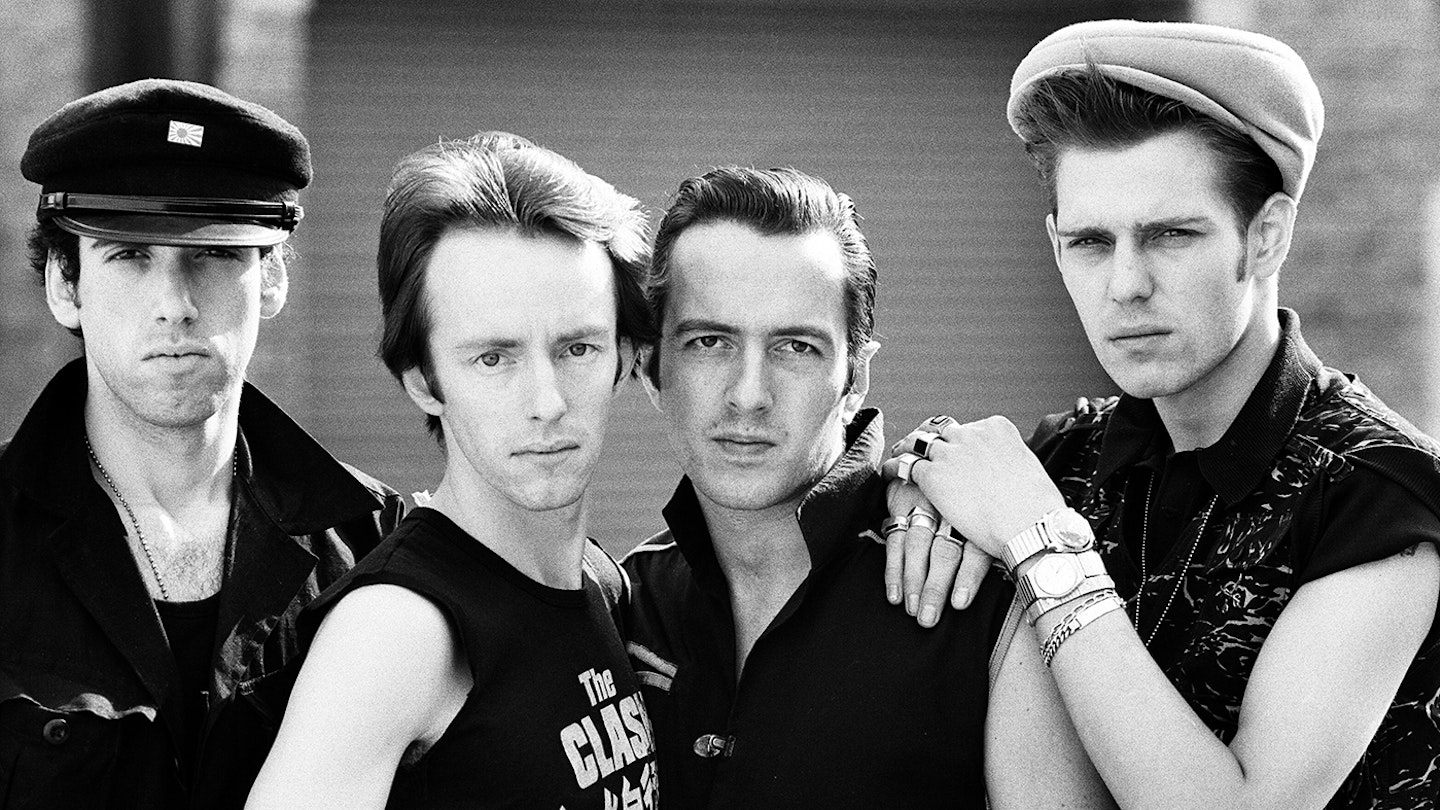When they first entered a recording studio, demoing tracks for Polydor in November 1976, it’s unlikely The Clash imagined that, 35 years later, they’d be one of rock’s biggest heritage acts. For a start, bassist Paul Simonon still had notes painted on his fretboard to help him play, vocalist Joe Strummer couldn’t sing, and drummer Terry Chimes had left a week earlier, defeated by wearying internal politics. Worse still, producer Guy Stevens had, while drunk, sacked guitarist Mick Jones from another group just 18 months before.
The omens weren’t good, yet within six months or so The Clash, by then signed to CBS, had become the most culturally vital group in Britain with The Clash. Militant and stylish art-school guerrillas, they were to play Robin Hood to fellow punk architects the Sex Pistols’ dastardly Guy Fawkes. By the end of the ’70s, they’d outlived most of their first-wave punk peers and, with drum wizard Topper Headon, were creating sprawling, ambitious LPs that mixed punk rock with reggae, soul, jazz, rockabilly, dub, hip hop and more.
It was a pioneering brew that, together with Joe’s personal/ political lyrics, would turn The Clash into international rebel icons, inspiring a million copy-cat punk acts plus several more waves of visionary musicians, from the Beastie Boys and Madonna to Manic Street Preachers and Gorillaz (who’d later include both Mick and Paul).
Adding to their six original studio albums came post-Clash ventures, notably a decade’s worth of Big Audio Dynamite plus several Carbon-Silicon albums (Mick), one solo LP and three with the Mescaleros (Joe), a single outing from Topper (1986’s Waking Up), while Paul teamed up with former Whirlwind singer Nigel Dixon as Havana 3AM, joined Damon Albarn for two albums as part of The Good, The Bad & The Queen and released an album with Galen Ayres as Galen & Paul.
It would perhaps be unfair to Albarn to consider TGTB&TQ’s two LPs ‘Clash solo records’ (you can visit our rundown of the best Blur, Gorillaz and Damon solo albums for that). So focusing on the core creative do of Strummer and Jones, here’s MOJO’s pick of the albums that demand your attention.
10.
The 101’ers
Elgin Avenue Breakdown (Revisited)
EMI, 2005
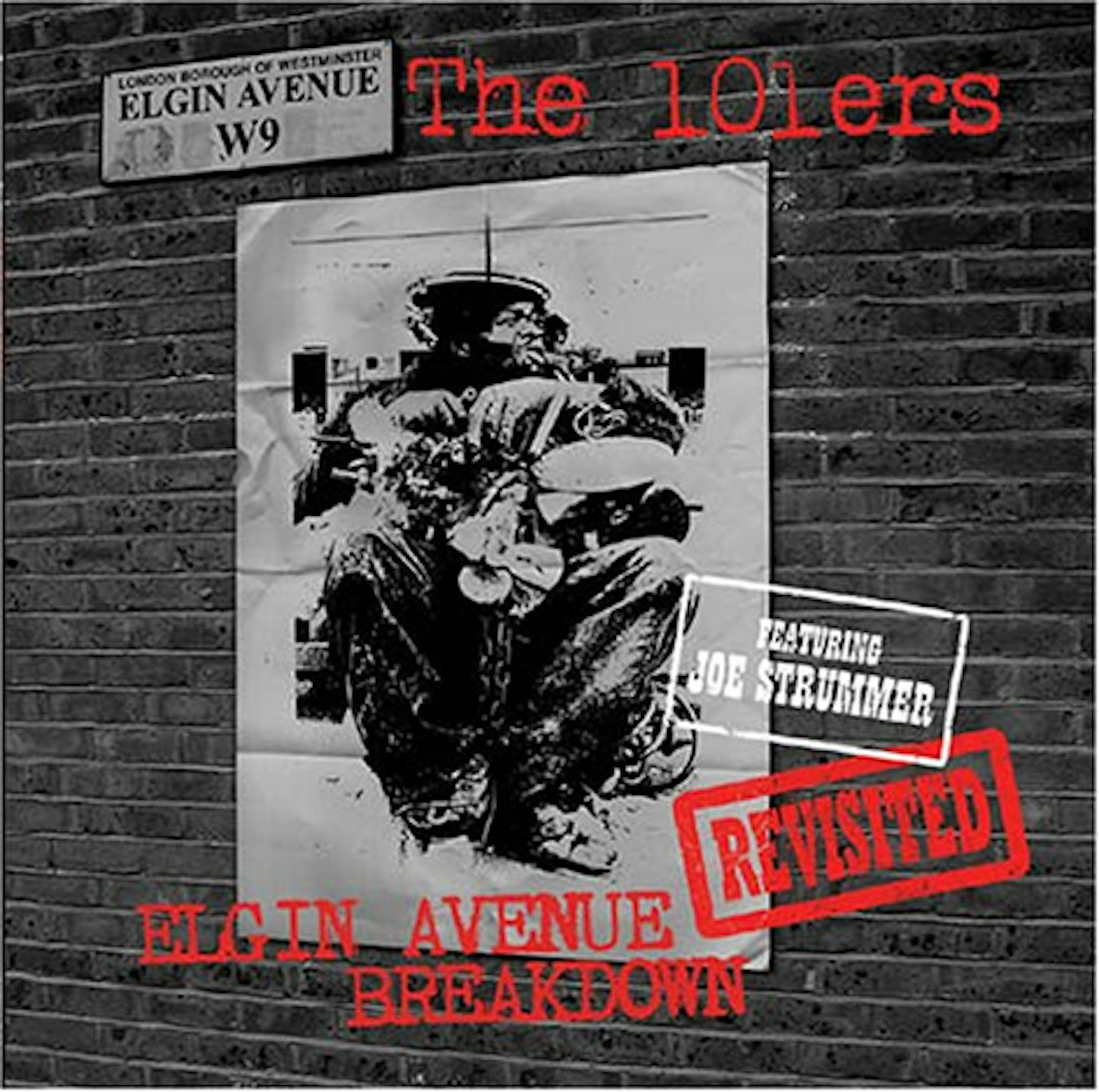
Strummer’s pre-Clash pub rock band were dismissed by the singer as “yesterday’s papers” when he saw the Pistols in March 1976. But this expanded edition of an early ’80s compilation proves vital elements of his word-smithery and vocal delivery were in place by 1975, not only on the spirited Keys To Your Heart – a Chiswick 45, the band’s only official release – but also on the sardonic Sweetie Of The St Moritz and lilting, Dylan-circa-Desire-tinted Sweet Revenge, which prefigures the ethnic folk-pop-rock of Sandinista! There’s even a prescient live version of that album’s Junco Partner.
Listen To/Buy: Spotify/Apple Music/Amazon
9.
Big Audio Dynamite
Megatop Phoenix
SONY, 1989
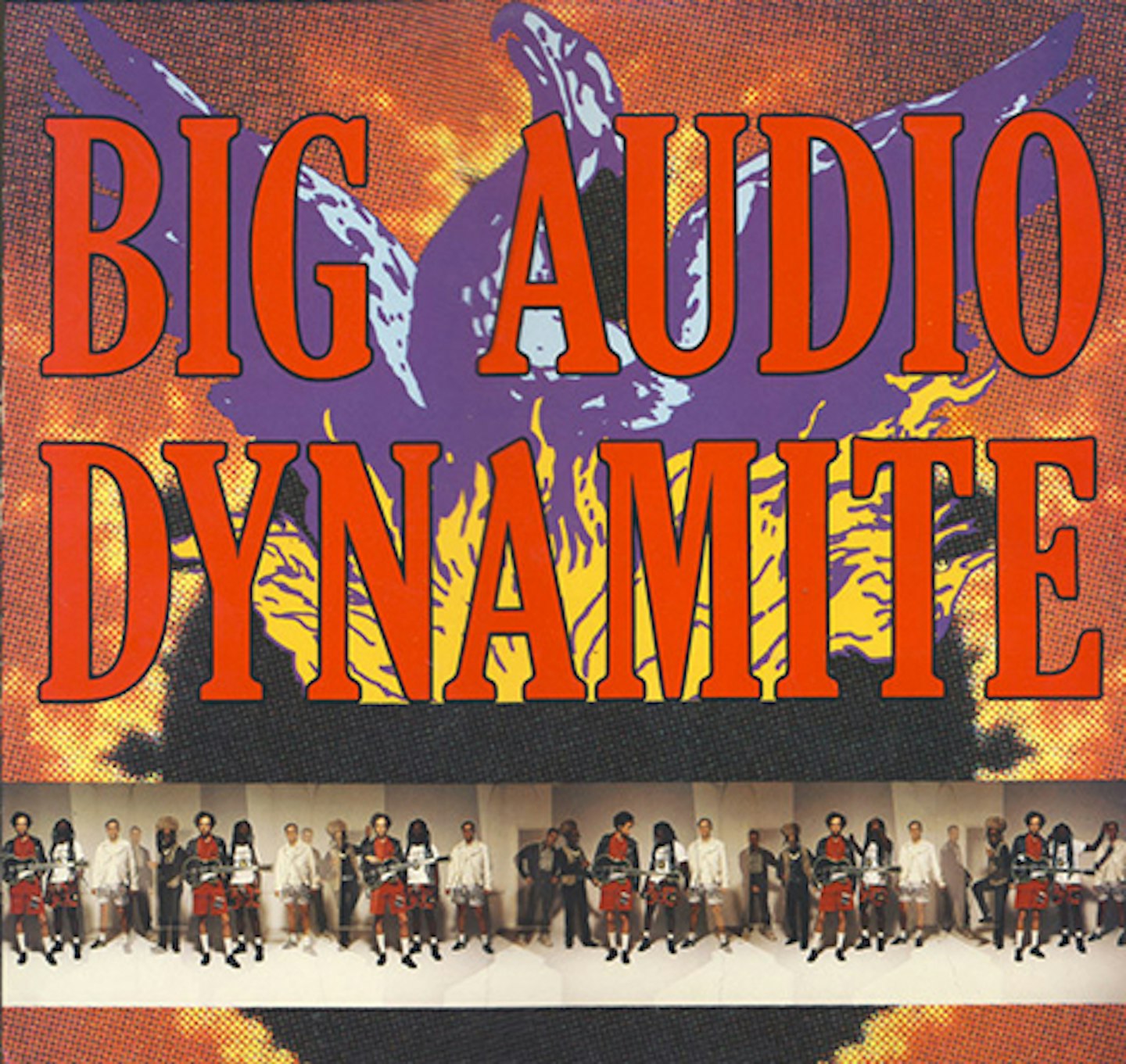
Back after a near-fatal bout of pneumonia caught from his baby daughter, Jones created a seamless, spellbinding suite of techno-drenched electro-rock on this, the classic BAD line-up’s final album. Cut while sampling legalities were still fuzzy, it features a raft of clips that could never grace an album subsequently, sourced from Jones pop cultural lodestones such as Powell & Pressburger’s film A Matter Of Life And Death, the Great Escape, Honky Tonk Women, The Who and George Formby. A sensual lushness suffuses the sublime dancefloor pop of Contact and Around A Girl In 80 Ways, sung by a softer-voiced Mick.
Listen To/Buy: Spotify/Apple Music/Discogs
8.
The Clash
Super Black Market Clash
CBS, 1980
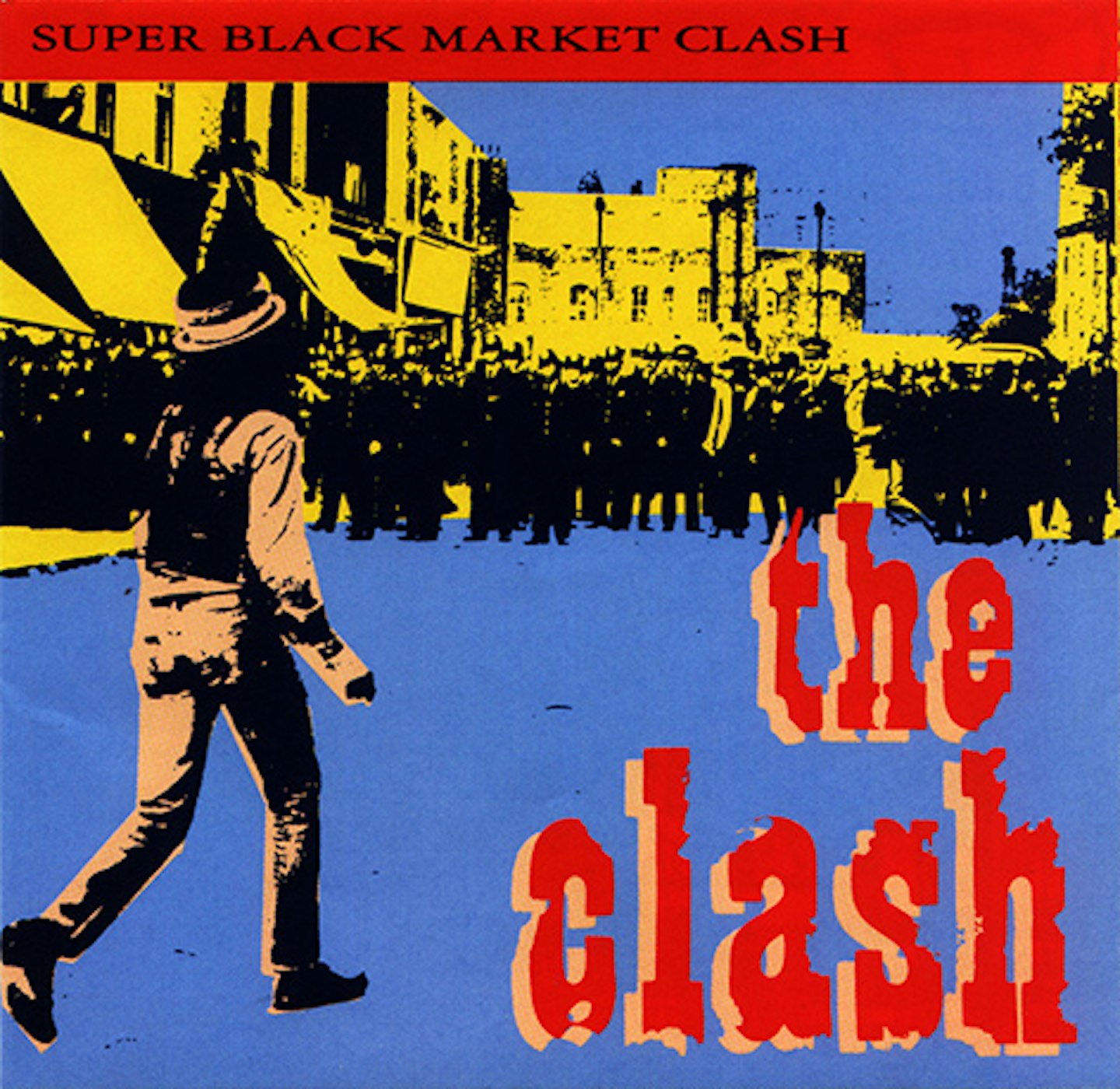
Expanded from a 10-inch vinyl LP, Black Market Clash – featuring early rarities, notably the 1977 NME freebie version of Capital Radio – Super BMC was re-tooled in the early ’90s to serve as a CD B-sides compilation. Good job, too, as from 1977 to ’80 Clash flipsides were rightly held in awe, the likes of 1977, The City Of The Dead, The Prisoner, Pressure Drop and Groovy Times every bit as special as their A-sides. This collection remains the only home for the group’s cover of Booker T. & The M.G.’s Time Is Tight – though, oddly, the original Capital Radio is dumped for its powerpop 1979 re-tread.
Listen To/Buy: Amazon
7.
Joe Strummer & The Mescaleros
Global A Go-Go
HELLCAT, 2001
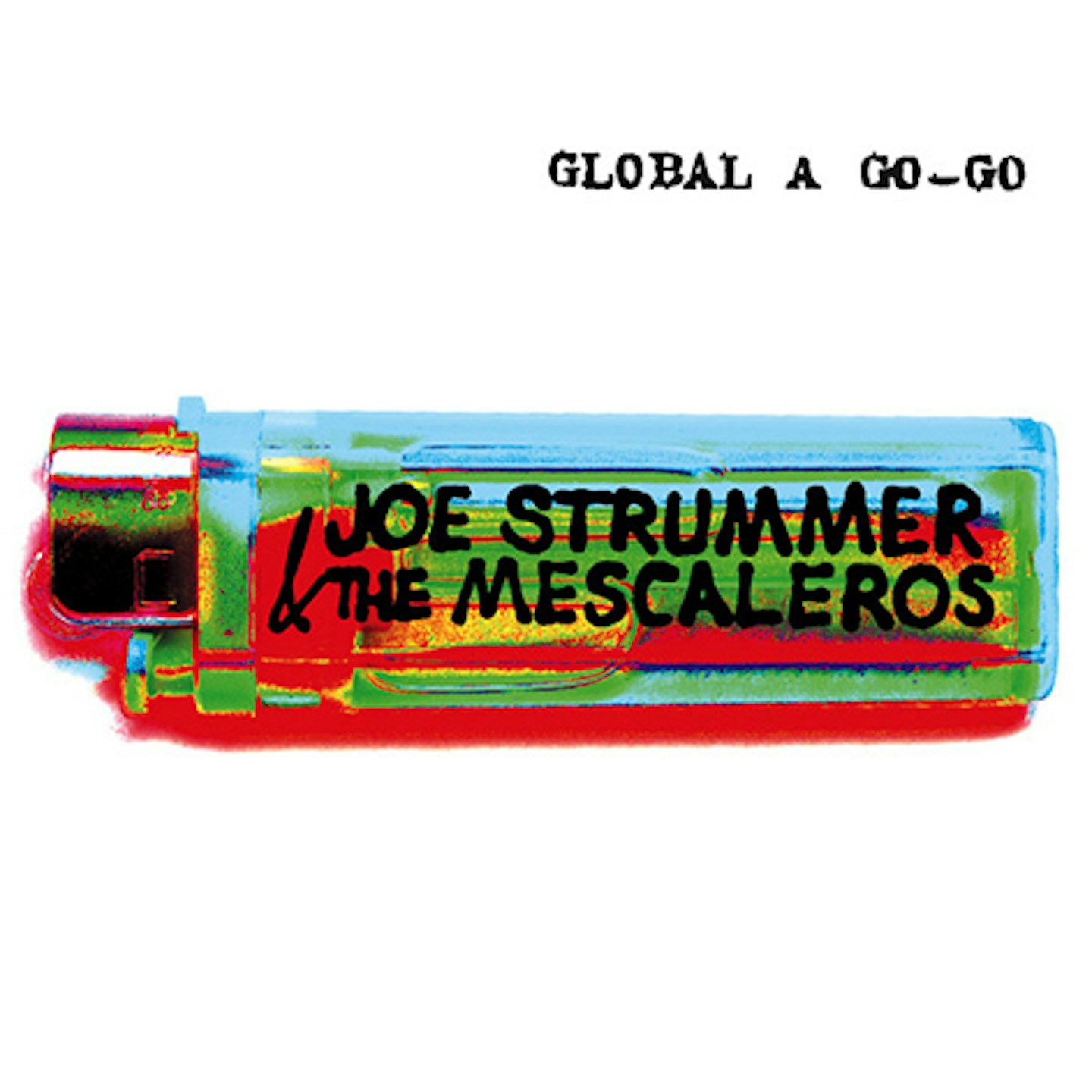
Recorded a year before Strummer’s death, with his pre-fame busking partner Tymon Dogg in tow, the Mescaleros’ second album said more about the mature Joe than any other post-Clash record. Drawing on ethnic-folk and percussion-driven African and Latin musics, especially the tropical Mondo Bongo, joyful work-song Johnny Appleseed and comic Bhindi Bhagee (a Kiwi tourist is re-directed to London’s multi-cultural heart after asking to buy mushy peas). Lyrically, he unleashed a torrent of richly textured, half-crazed mondo-lingual street wisdom.
Listen To/Buy: Spotify/Apple Music/Amazon
6.
Big Audio Dynamite
This Is Big Audio Dynamite
SONY, 1985
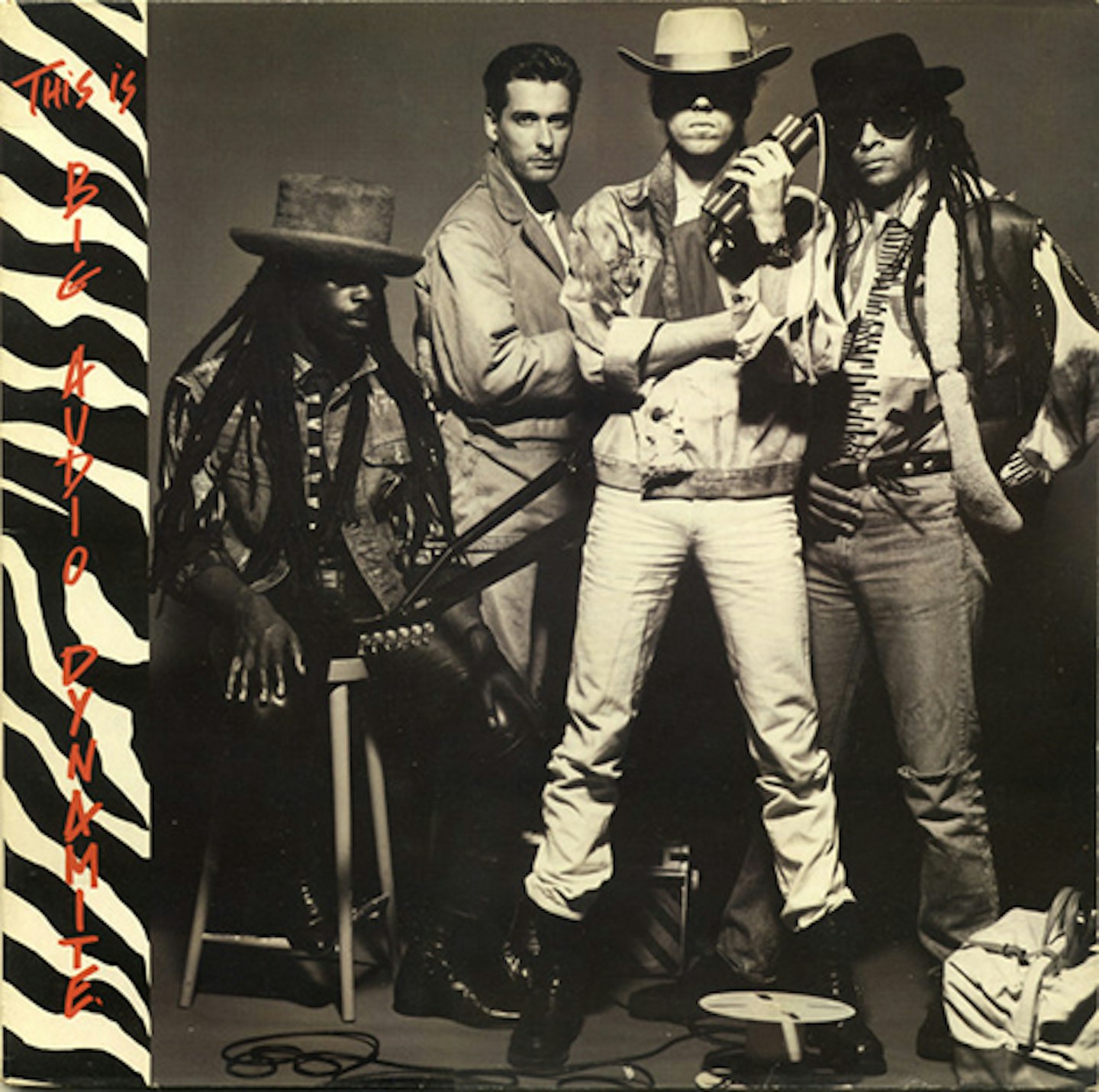
Jones’s comeback, after being fired by The Clash in 1983, was shaped by the same passion for electronic dance beats that had so distanced him from Joe and Paul in the group’s last days. Yet, though some of its ’80s bass and drum sounds seem dated, Mick still knew how to write a great tune, and the sharp, sledgehammer punk-hop of Medicine Show and E=MC2, veneered with Jonesy’s sarf London twang, became instant classics. Add to this ex-Clash video-maker and top Dread Don Letts’ toasting, a raft of film samples, and the future sound of London (so to speak) was born.
Listen To/Buy: Spotify/Apple Music/Amazon/Rough Trade
5.
The Clash
Give ’Em Enough Rope
CBS, 1978
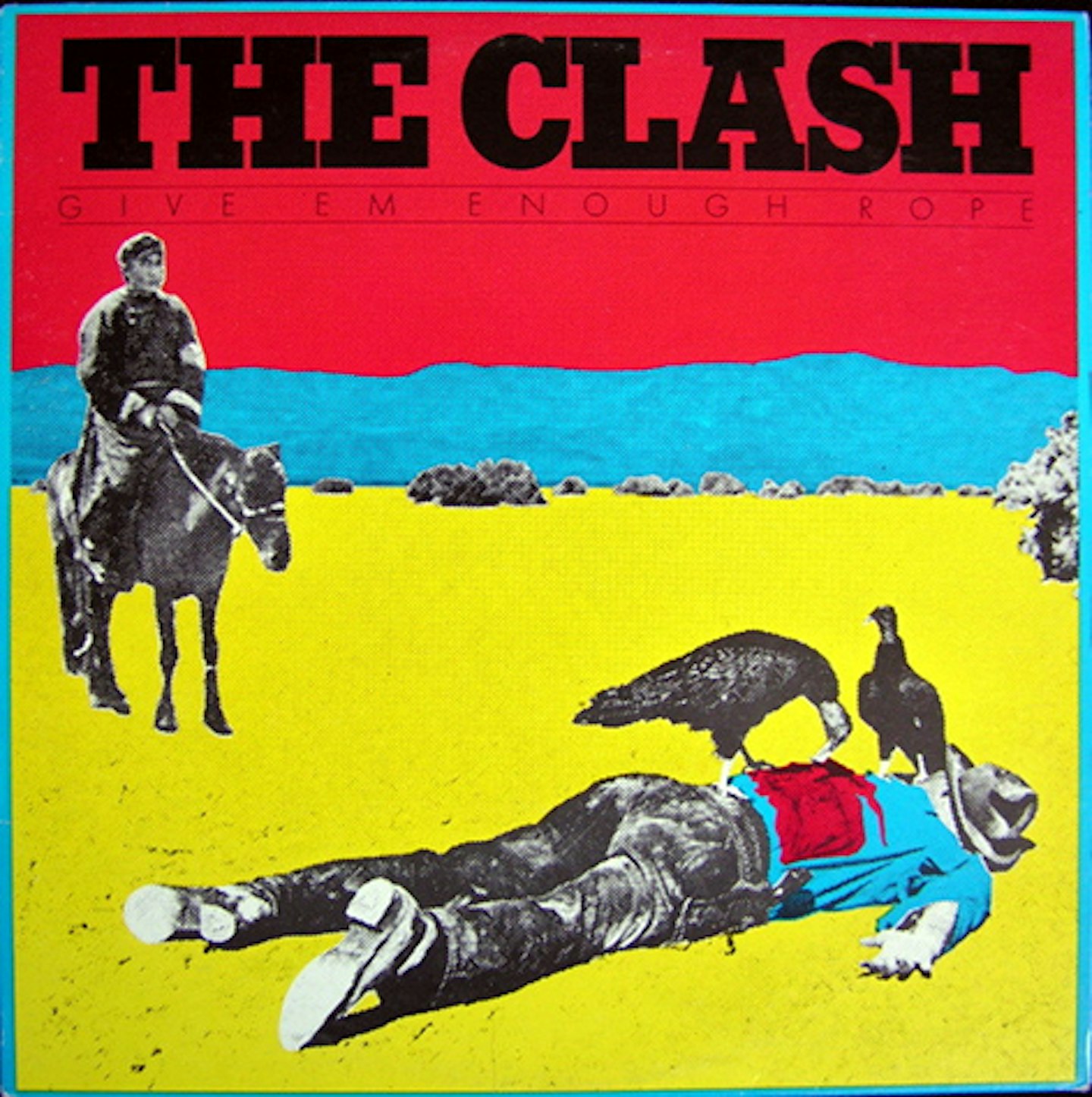
A contrary bunch, The Clash opted to record their second LP with the most un-punk producer imaginable: Sandy Pearlman, mentor of American AOR rockers Blue Öyster Cult. Fraught sessions in London, San Francisco and New York shaped their most ‘rock’ album, a polished, powerful guitar fest giving a platform to the band’s growing interest in world affairs – Euro-terrorism, the rise of neo-Fascism, third world crises – and obsession with writing about London, drugs and themselves. Has great guitar solos, bold lyrics and some of the group’s finest tunes, Safe European Home, English Civil War and Tommy Gun among them.
Listen To/Buy: Spotify/Apple Music/Amazon/Rough Trade
4.
The Clash
Combat Rock
CBS, 1982

The last hurrah of the classic line-up, Combat Rock was the album that launched the group into the international rock stratosphere, yielding the dancefloor smash Rock The Casbah and Mick’s lopsided garage-rocker Should I Stay Or Should I Go? Trimmed down from a rambling double album to a punchy single LP by producer Glyn Johns, it’s musically suffused with the funky atmosphere of a graffiti’d, rap-infected New York (where it was made), and lyrically with the humid, psychedelic Vietnam visions of Apocalypse Now, The Clash’s film de jour. Topper’s addiction had seen him fired by the time it hit the racks.
Listen To/Buy: Spotify/Apple Music/Amazon/Rough Trade
3.
The Clash
Sandinista!
CBS, 1980
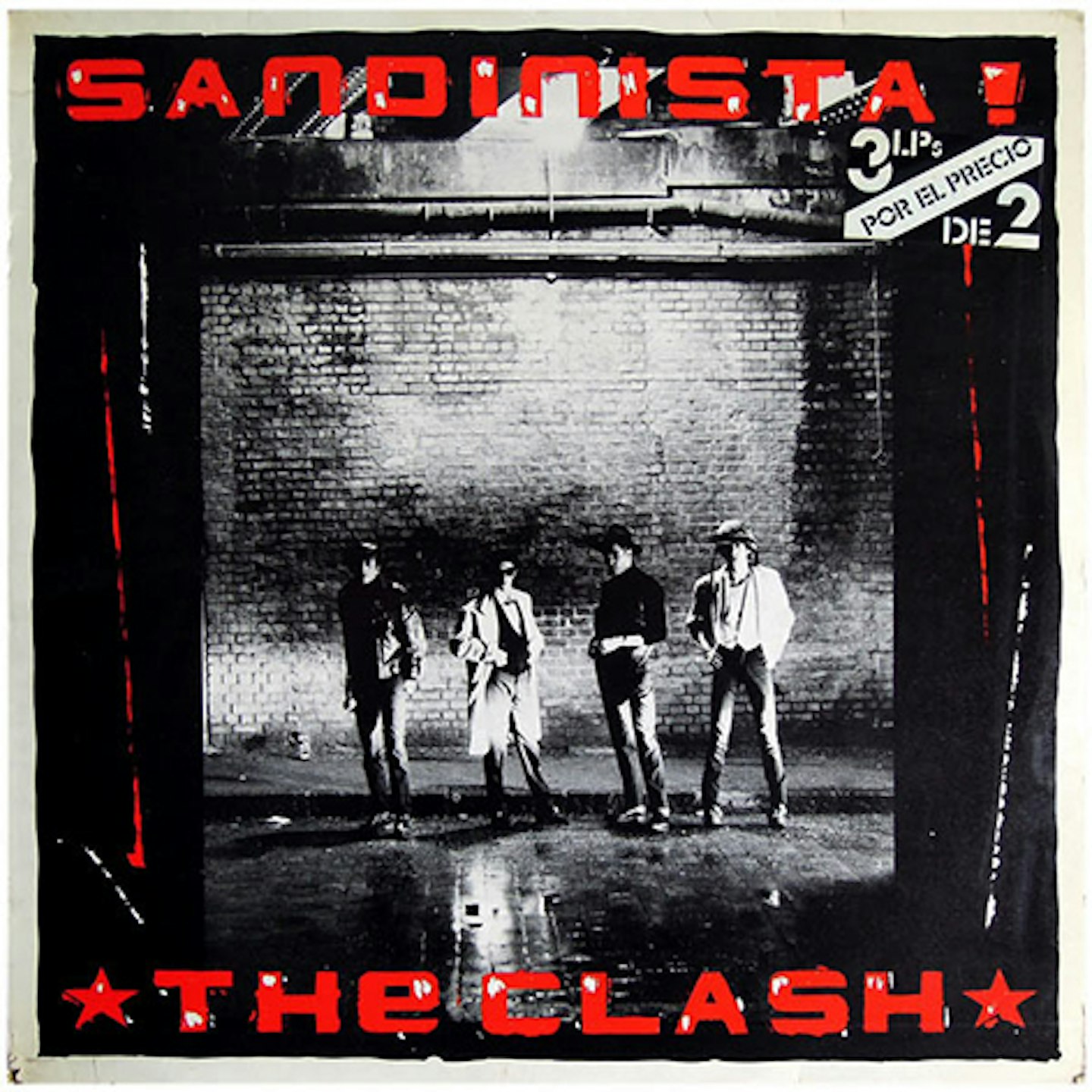
The UK press thought The Clash had lost it. Six sides? Jazz? Kids singing old Clashclassics? But this extraordinary three-LP set saw the group embark on a musical voyage into their own heart of darkness, a journey through rap, dub, soul, Latin and beyond. But the band super-excelled here whether covering reggae-soul hits (The Equals’ Police On My Back), crafting trenchant rock (Somebody Got Murdered), venturing into contemporary black forms (The Magnificent Seven) or writing some uncategorisable gems such as Something About England or Charlie Don’t Surf. Two-and-a-half hours of weird, mind-bending brilliance.
Listen To/Buy: Spotify/Apple Music/Amazon/Rough Trade
2.
The Clash
The Clash
CBS, 1977
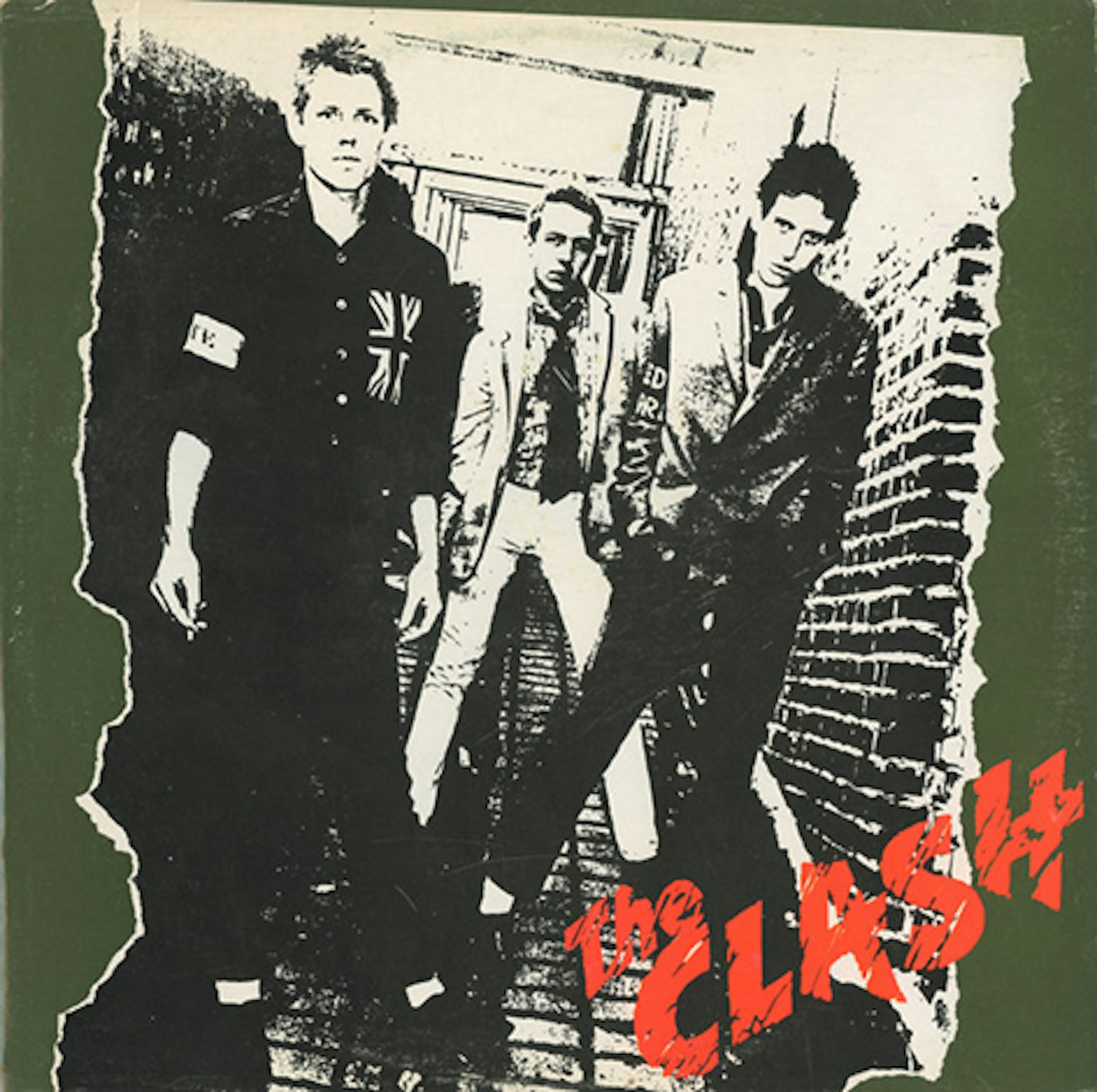
Rock was never quite the same after this, a speed-stoked protest record that caught the frustrations and cheap thrills of mid-’70s London youth, seen through the prism of Joe’s poetic, wry, comic-book mind. His images of tower blocks (London’s Burning), unemployment, newspaper scandals (Janie Jones), boredom (Remote Control), drugs (48 Thrills) and civil unrest (White Riot) were brought to life by Mick’s clever key changes and guitar interplay and the rock-reggae treatment of Junior Murvin’s Police & Thieves established the important punk-Rasta axis. Never Mind The Bollocks came six months later, making The Clash UK punk’s primary LP.
Listen To/Buy: Spotify/Apple Music/Amazon/Rough Trade
1.
The Clash
London Calling
CBS, 1979

By the end of the decade, punk had eaten itself and synths were about to take over. But, inspired by their trips to America, The Clash saw a radical way forward: rocking up the black R&B, reggae, jazz, ska and funk influences they loved so much. There was some rock on this Guy Stevens-produced 2-LP masterpiece – the title track, Spanish Bombs, Clampdown – but elsewhere it was a Ladbroke Grove-styled soul rebel stew, capped by classics like Train In Vain and Rudie Can’t Fail. The 25th anniversary edition adds a disc of demos and compelling footage of the group in the studio. And Pennie Smith’s shot of Simonon smashing his bass on the cover is, arguably, rock iconography’s high point.
Listen To/Buy: Spotify/Apple Music/Amazon/Rough Trade
Avoid These!
The big no-no is 1985’s Cut The Crap, the post-Mick’n’Topper line-up’s grand electro-rock folly (though lead track This Is England is a triumph); Simonon isn’t even on it, making it debatable whether it’s really The Clash at all. Topper’s 1986 solo album, Waking Up, is a straightforward by-numbers showcase, it won’t ruin your life if you don’t hear it; nor is a 1991 self-titled album by Paul’s Havana 3AM – momentous but two-dimensional rockabilly. Strummer’s soundtrack to the Alex Cox film Walkerhas piquant Latino moments, especially the lovely Filibustero, but flags.
